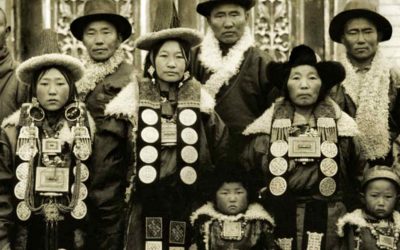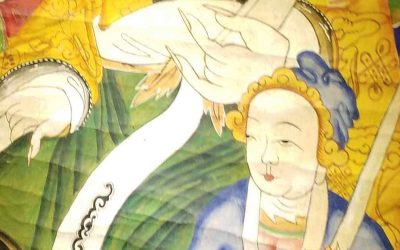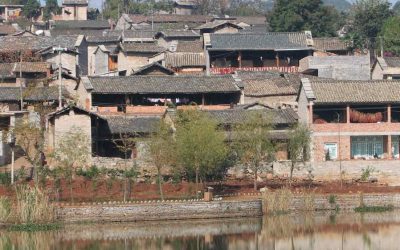Tibetans, the people who descend from the monkey
According to an ancient myth, the Tibetans originated from the union of an ogress (raksasi) and a monkey. The monkey was sent by Avalokitesvara, Mother Buddha, to sow the seed of Buddhism in these lands.
One day, an ogress approached the monkey and tried to tempt him to marry her. At first the monkey refused, but the ogress continued:
«If you do not marry me, I will become the wife of a devil and give birth to countless children and grandchildren. In future times this plateau will become a world full of devils and thousands of people will be killed. So please do as I have told you.»
Full of doubts, the monkey consulted Avalokitesvara on how he should act, who replied that such a marriage was his destiny and a good deed for Tibet. So they finally married and had five children who learned to speak, lost their tails and became the ancestors of the Tibetan people.
This story is very popular in Tibet, found in myths, legends and wall paintings. Its reflection has remained forever in toponymy, for the name Tsetang, the place where its kings are said to have originated and its most ancient spiritual center, means in Tibetan «the place where monkeys play».
It is curious to note that long before Charles Darwin formulated his theories of evolution in which it is affirmed that man descends from the monkey, in some lands the intuition of this phenomenon already existed.
Last posts
There was a matriarchy among the Yugur?
There was a matriarchy among the Yugur? The matrimonial customs of the Yugur present differences between their two main groups. Among the Eastern Yugur, girls had a time of great sexual freedom. Their rite of passage was the ceremony of making the headdress, which was...
The Yugur of Gansu, descendants of the Kings of Dunhuang
o The Yugur of Gansu, descendants of the Kings of Dunhuang Name. Their Chinese name is Yugu, written 裕 固 族. The Yugu or Yugur call themselves Yaoyuer and Xilayuguer. The name Yugur is relatively recent, as it only began to be used after 1949. Population: About 13,000...
Two stories of Liu Ba, the Bai trickster
Two stories of Liu Ba, the Bai trickster The Bai are one of the minorities who have had the longest contact with the Chinese.They are also one of the minorities that has received more cultural influences. This has been due to the accessibility of the land they...
The history of the Sani of the Stone Forest
The history of the Sani of the Stone Forest As told by father Paul Vial in his book Les Lolos, Histoire, religion, mœurs, langue, écriture. The Lolos say they came from the region between Tibet and Burma, and at the very beginning of their history, they...
Danuohei, the stone village of the Sani minority
Danuohei, the stone village of the Sani minority Danuohei Village - (大糯黑村) is a Sani minority village. The Sani minority, actually a branch of the Yi, lives in the whole area around the Stone Forest until reaching Puzhehei, where one can also visit some beautiful...
The Baoan, master sword makers in the Silk Road
The Baoan, master sword makers In the dry lands of Gansu province, at the foot of the Jishishan mountain, there are three villages inhabited by different people. At first glance, their life is the same as that of any other Muslim population in that vast region crossed...









